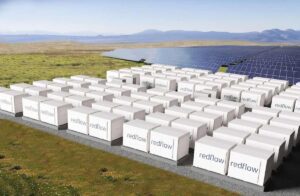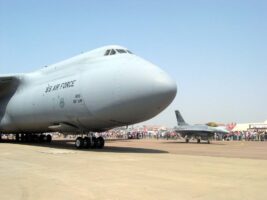Australian flow battery maker Redflow has the go-ahead to start making batteries for the solar-storage Paskenta Racheria microgrid project in California, although on a smaller basis than originally contracted for.
The Brisbane-based company will make 15 MWh of “energy pods” after receiving the order from project developer Faraday Microgrids.
The contract is worth about $US9.23 million ($A14.15 million) in revenue.
The project itself was originally slated to be a 20 MWh storage system combined with 5 MW of solar, to provide power to the sovereign Native American nation of Paskenta Band of Nomlaki Indians in Northern California, but it was cut back to 15.4 MWh after delays.
Redflow, which won the initial contract in June last year, says the agency funding the project, the California Energy Commission (CEC) is looking for new sources of funding so the final installation can remain true to the original 20 MWh plan.
As well as being one of the biggest deployments of this type of technology in the world, the project is the company’s second largest single sale and deployment of its batteries, yet.
“This represents a major milestone for Redflow’s growth in North America and is an exciting time for us as we begin production of the batteries for our largest project to date,” said Redflow CEO and managing director Tim Harris.
Redflow expects shipment of the batteries to occur in late 2024, with installation and commissioning occurring in early 2025.
Contracts outpacing manufacturing capacity
Redflow has signed contracts to supply slightly more than 60 MWh of batteries since June last year and is one of a small number of non-lithium storage providers who the CEC is working with to help one commercialisation and large-scale validation.
The largest contract is the 34.3 MWh project for the Valley Children’s Hospital in Madera, California, to switch from diesel generators, and is also being led by Faraday Microgrids.
Those batteries are due in 2025.
The smallest is a 200 kWh project with Acciona in Spain.
Other projects signed in this financial year are a 4 MWh battery in Ipswich for Energy Queensland and a 1.2-1.4 MWh battery for the US Department of Defence.
This month Redflow signed a fourth contract supported by California Energy Commission (CEC) funding, to supply its zinc-bromine battery technology to the Barona Band of Mission Indians.
The $20.1 million project is for a 6.6 MWh battery and has been shortlisted for a $13.8 million grant through the CEC.
Grant terms will now be negotiated with the CEC, with development expected to get underway later this year and anticipated deployment some time in 2025 or 2026.
The volume of work Redflow is signing up outpaces the company’s current manufacturing capacity in Thailand, which it had hoped to ramp to 40 MWh per annum by the end of 2023.
Instead, problems with quality of glass filled high density polyethylene material from suppliers meant production capacity was stuck around 8-10 MWh per annum.
The company says this issue has been resolved and hopes to hit its original target of 80 MWh capacity by the end of the year, however.










